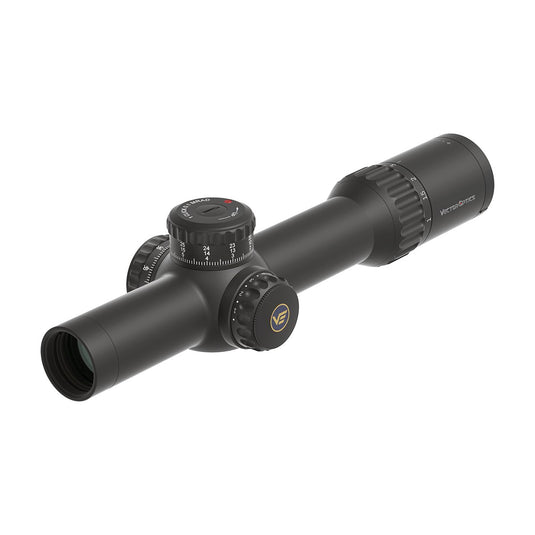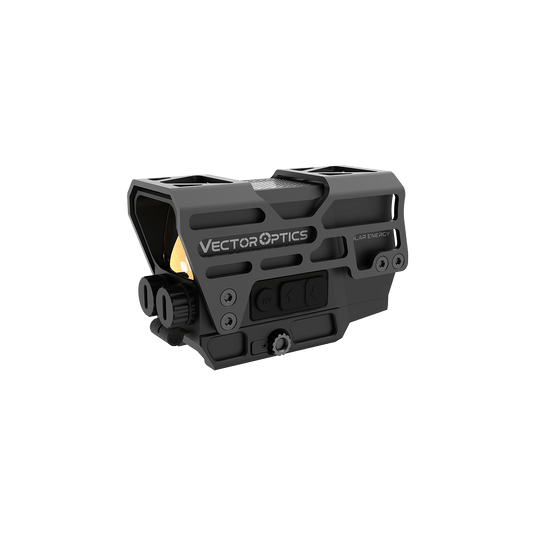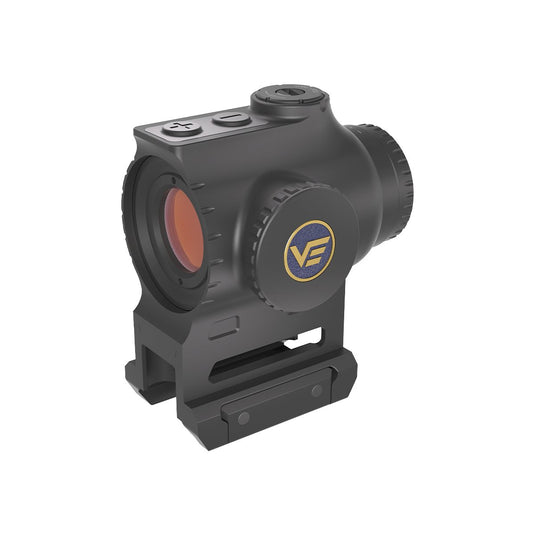Like and follow us if helpful
Evelyn: Stephen, for .22 LR and several other small ammo calibers, many scopes' elevation can't adjust to zero center, especially when using high magnification scopes with less adjustment range. What shall we do? And how to avoid this situation?
Stephen: Yes, it does exist. Most of these bullets drop fast after 50 yards, the scope elevation adjustment can’t reach that far. You need to use special scope rings.
Evelyn: What is it?
Stephen: It is called “Adjustable Scope Ring” as Picture 1 shown, it has screws on the side that make the height adjustable. Currently, adjustable scope mounts with maximum adjustment values of 20 MOA, 30 MOA and even 40 MOA are available on the market for option. The following adjustable rings have large up range that can be used on the scope with 56mm objective lens.
(Learn more about adjustable scope ring: https://www.youtube.com/watch?v=0mXDTqCb14cZZ)

Evelyn: I see.
Stephen: We usually define long-range as range more than 500 yards, but for some ammunition like .17HMR, .22LR there is a significant bullet drop happened only 60 yards. So to solve the lack of elevation adjustment is actually to compensate for the bullet drop.

Evelyn: It makes sense.
Stephen: Before purchase, we need to know that adjustable scope ring is more suitable for some ammunition with low kinetic energy and fast drop. As picture 2 shows, the degree of bullet drop varies from ammunition to ammunition. Adjustable mounts are more suitable and widely used for airgun and ammunition with more significant ballistic drop like .17HMR,.22LR.
Evelyn: Okay, so how can adjustable scope mount compensate for the bullet drop?
Stephen: You need to mount the adjustable scope ring like picture 3 shows, adjust the rear mount② higher than the front mount①, and the scope is a little bit tilted forward.

Evelyn: Yes, obviously.
Stephen: This way can effectively compensate for the bullet drop and hits the target. For better understanding, Picture 4 shows both cases with and without the adjustable scope ring.

Evelyn: I got it, the use of adjustable scope ring equivalent to disguised increase in elevation adjustment!
Stephen: Exactly. In addition to using an adjustable scope mount to compensate when the elevation adjustment is exhausted you can also do this before you start shooting.
Evelyn: How to do that?
Stephen: Assume your scope has a total 60MOA elevation adjustment range of which 30MOA is the upward adjustment and 30MOA is the downward adjustment. In the actual shooting half 30MOA adjustment value is often not used, in this case, we can install the adjustable scope ring like the above way before shooting,which you can have more elevation adjustment to help you compensate for bullet drop more flexibly and accurately.
Evelyn: This is a fantastic method! How about an angled scope ring without adjustment? It can also compensate for bullet drop this way.
Stephen: Yes, sure. A fixed angled scope ring can not only compensate for bullet drop but also firmer and more stable. Angled mounts are more accurate than adjustable mounts especially when it comes to fighting recoil. The adjustable mount is not good enough for precision shooting and long range shooting, but it is more flexible to use.
Evelyn: Indeed it is. Thank you for your sharing, Stephen!
Stephen: You are welcome.
Like and follow us if helpful

































